Why choose Irix 150mm f/2.8 Macro 1:1 and Quadralite MiLED?
In macro photography, the right lens we photograph is extremely important. We must remember that the right magnification ratio is crucial - it determines how big our object will appear in the photo. The Irix 150mm f/2.8 Macro lens has a 1:1 magnification ratio, meaning 1mm of the photographed object will be projected onto 1mm of the camera’s sensor, which allows us to capture extremely impressive shots. What makes the Irix 150mm f/2.8 Macro 1:1 lens stand out from the competition is the aperture, with 11 rounded blades. Thanks to that, the photos are characterized by incredible detail regardless of the aperture value used.
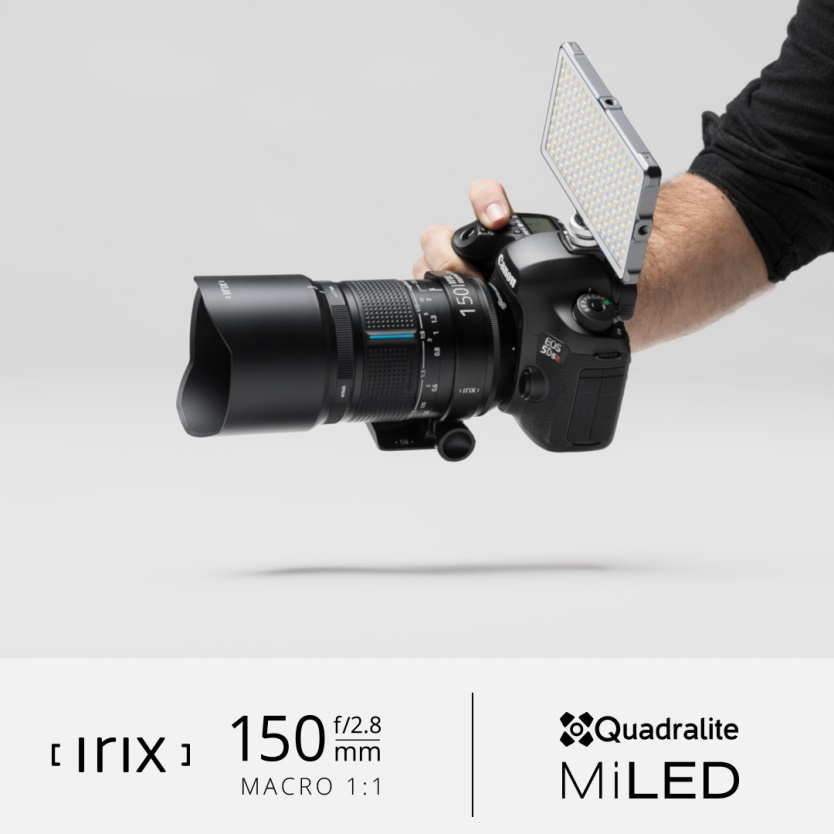
Very precise focusing is possible thanks to the long rotation of the focus ring, and thanks to the tripod clamp (with an Arca Swiss standard foot; included with the lens) you will be able to securely and comfortably place the camera with the lens on a tripod.
We don't have to mention the importance of proper lighting when taking photos. The Quadralite MiLED line of pocket led panels is ideal for anyone experimenting with macro photography. Very good color reproduction (Ra ≥96) and their remarkable mobility will help carry out the work of all those who need a reliable light source. The line includes 3 models of LED panels. Quadralite MiLED 112 and 180 are Bi-Color panels that generate high-quality light, whose color temperature can be adjusted from 3200 K to 5600 K. The Quadralite MiLED RGB 198 LED panel is characterized by the ability to reproduce almost any color of light in the RGB space. With its help, you can illuminate the photographed object, but also create unique photos thanks to the ability of being able to change the colors of light. MiLED RGB is able to display almost any color you want to use during a session. In situations where the lighting must be matched to the ambient light, you can manually choose the color temperature from 3200 K to 5600 K.
Water Droplets
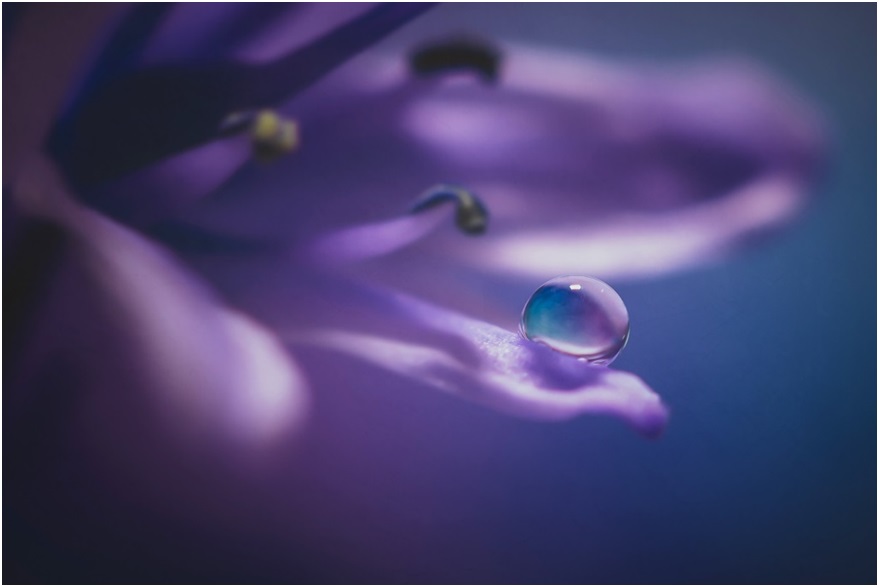
Droplet on Petal: 1/15 Sec, f/4, ISO 100. Photo: Stewart Wood
Water - it's everywhere, and can be an interesting subject for our photos. When taking photos of water, it is worth paying attention to the right light - it should emphasize the shape of the droplet or enhance a given element of the photo. It is also worth using a light source with the possibility of changing colors, such as Quadralite MiLED RGB 198. This pocket LED panel is characterized by the ability to reproduce almost any color of light in the RGB space. Changing the background lighting will allow us to set the right mood and tone for our photo.
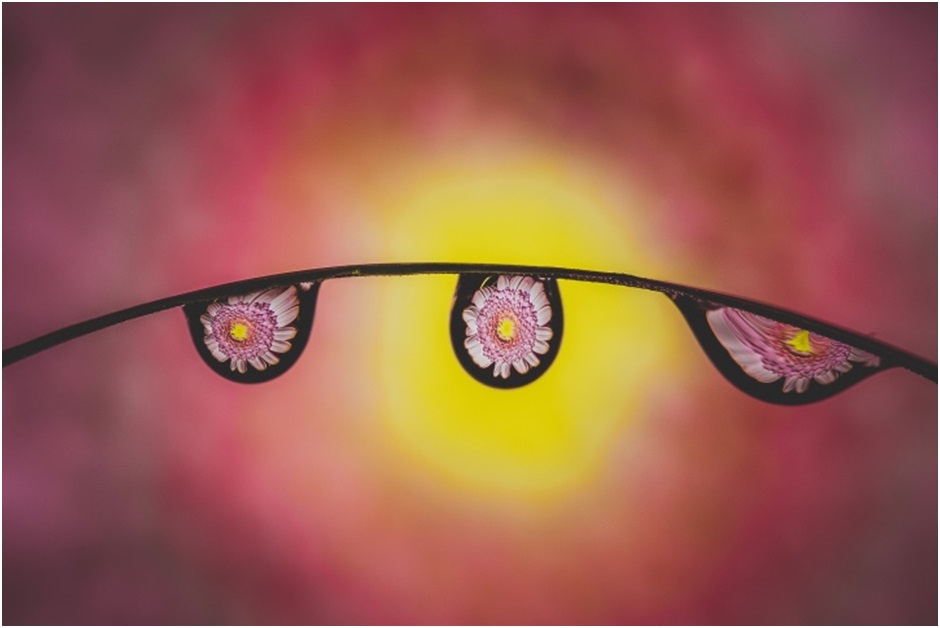
Droplets on blade of grass: 1/6 Sec, f/11, ISO 100. Photo: Stewart
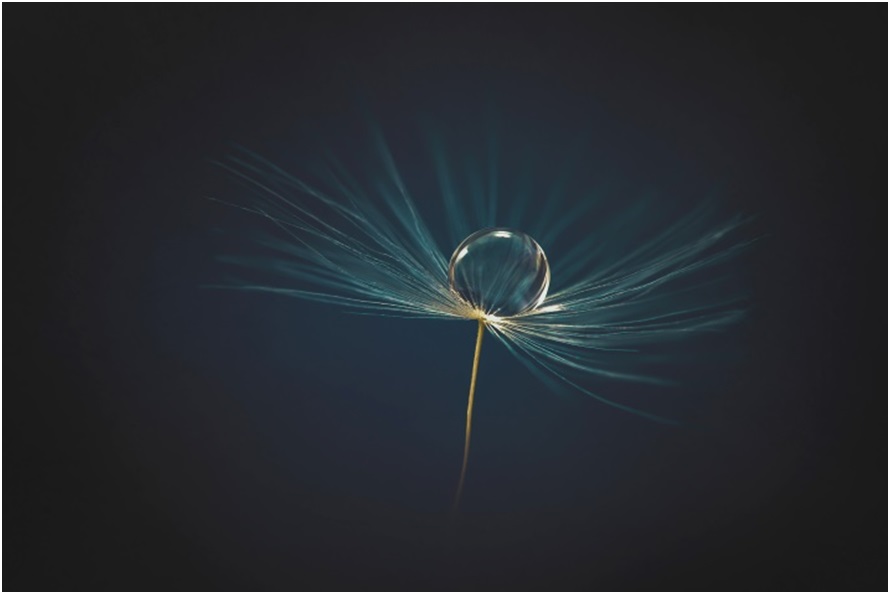
Droplet on dandelion seed: 0.8 Sec, f/7.1, IOS 100. Photo: Stewart Wood
Water Beads (Water Gel)
Everyone has had contact with them at some point - they are used for the irrigation of plants, children's toys, or even as an element of decoration. What’s important, however, is that they do not stick to surfaces they touch, so we can use them for several or even a dozen photos.
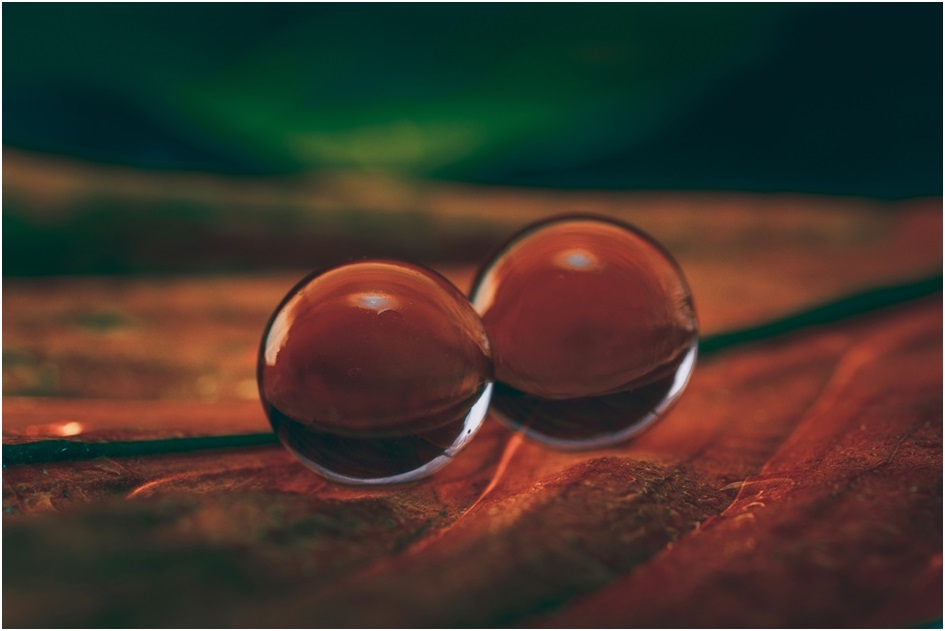
Water beads on leaf: 1/200 Sec, f/7.1, ISO 100. Photo: Stewart Wood
In this case, it's worth playing with the depth of field - the longer focal length of the Irix 150mm f/2.8 Macro 1:1 will allow you to effectively separate the beads from the background while maintaining very sharp focus on the beads themselves. Note how the areas outside the depth of field remain incredibly soft and smooth- this is due to the 11 rounded aperture blades.
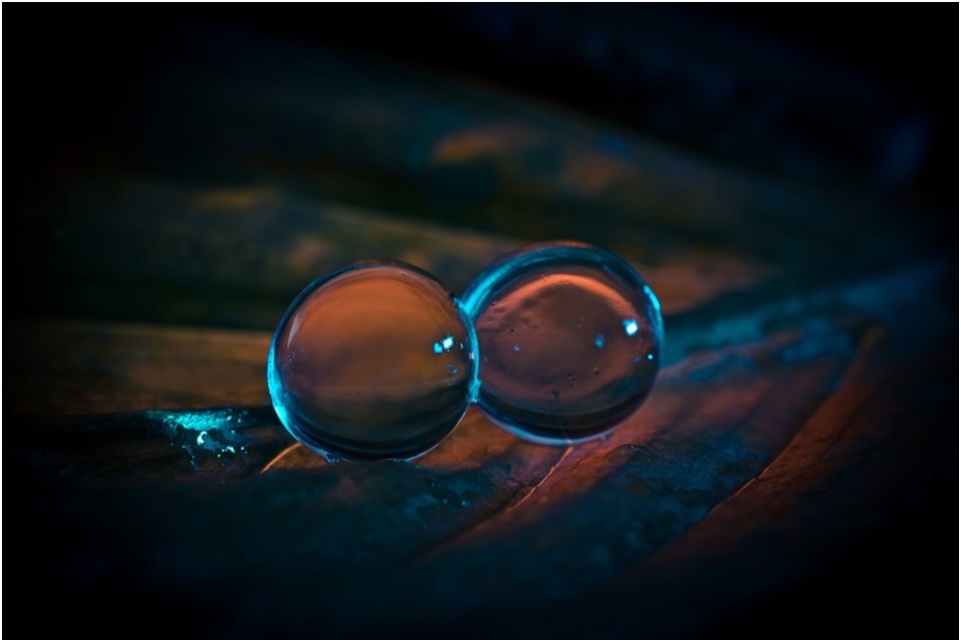
Water beads on leaf; Photo: Stewart Wood
Oil and Water
Another simple idea for photos that gives an interesting effect is oil with water. This combination creates an unusual effect, and the addition of appropriate colors means that we can obtain a beautiful abstract effect.
How to Shoot?
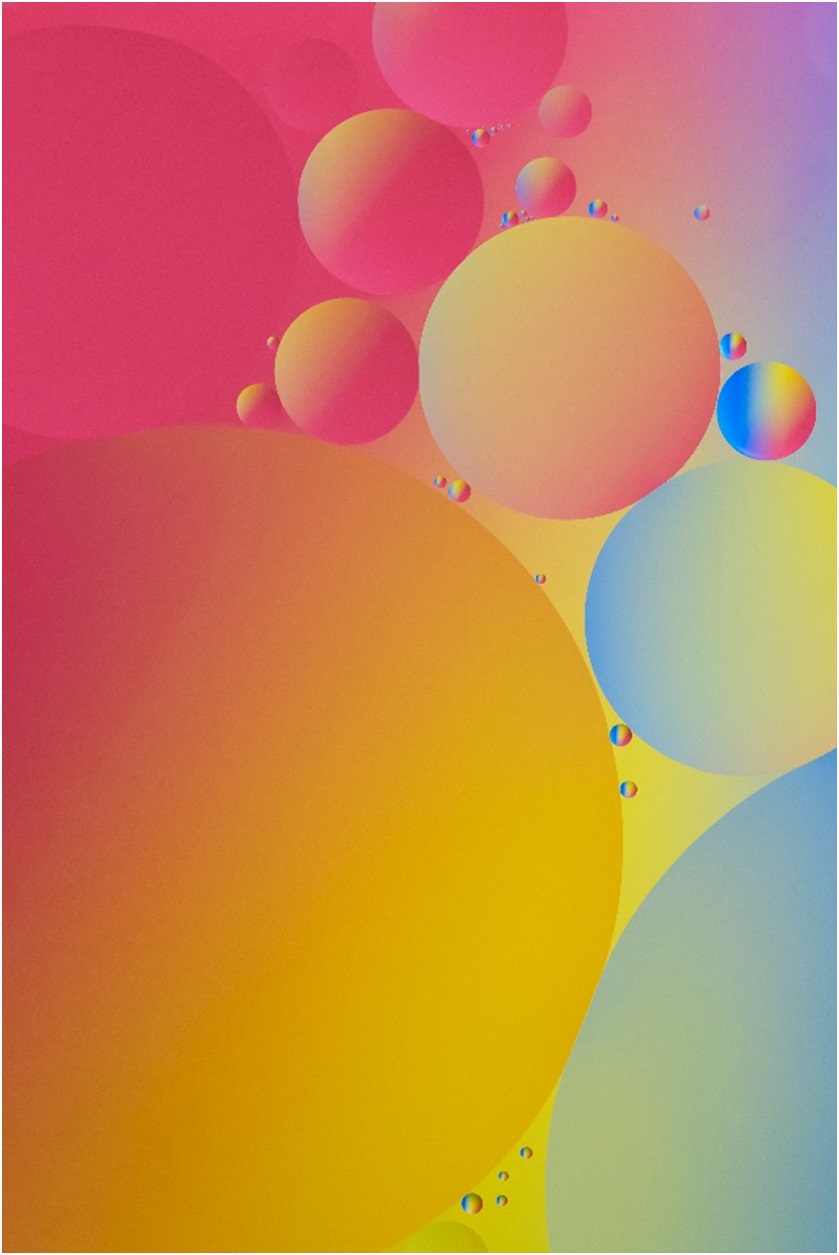
Oil and Water: 1/500 Sec, f/4, ISO 800. Photo: Stewart Wood
Pour water into a glass bowl, add a little oil and stir well - it will break the oil into smaller circles. Now place a light source such as the MiLED Bi-Color 112 under the bowl, whose color temperature can be adjusted from 3200 K to 5600 K. In addition, you can try out different colored foils.
To freeze motion for oil photography you need shutter speeds faster than 1/160th of a second.
Soap Bubbles
Soap bubbles are another easy and interesting subject to shoot. Properly lit, they will repay you with an unusual palette of colors that pass and mix within each other.
How to Shoot?
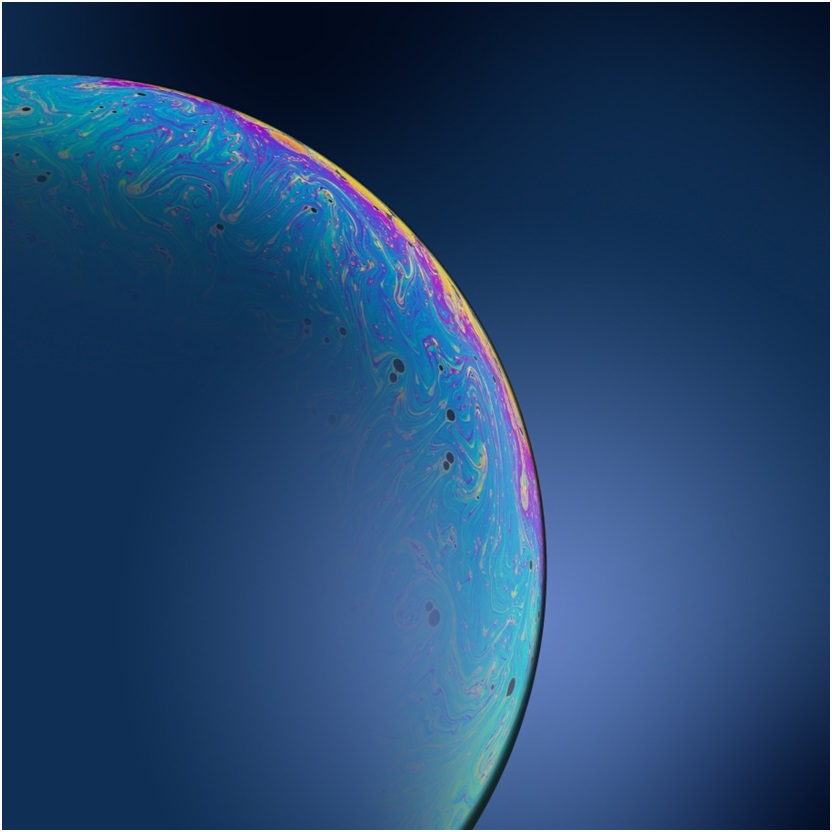
First, set the camera on a tripod (with the Irix 150mm f/2.8 Macro 1:1 you can use a tripod clamp to avoid framing/composition problems). Focus exactly where you are going to make bubbles. Mix a little dish soap with water to start forming bubbles. The more dish soap you add to the mix, the more colorful and "oily" the bubble will look. To easily create bubbles, use straws and form them on a wet plate.
The background of the photo should be placed relatively close to the bubble so that the light that illuminates our subject also falls on part of the background. The Quadralite MiLED RGB 198 will allow you to quickly and easily change colors to help you produce many interesting shots in a short time.
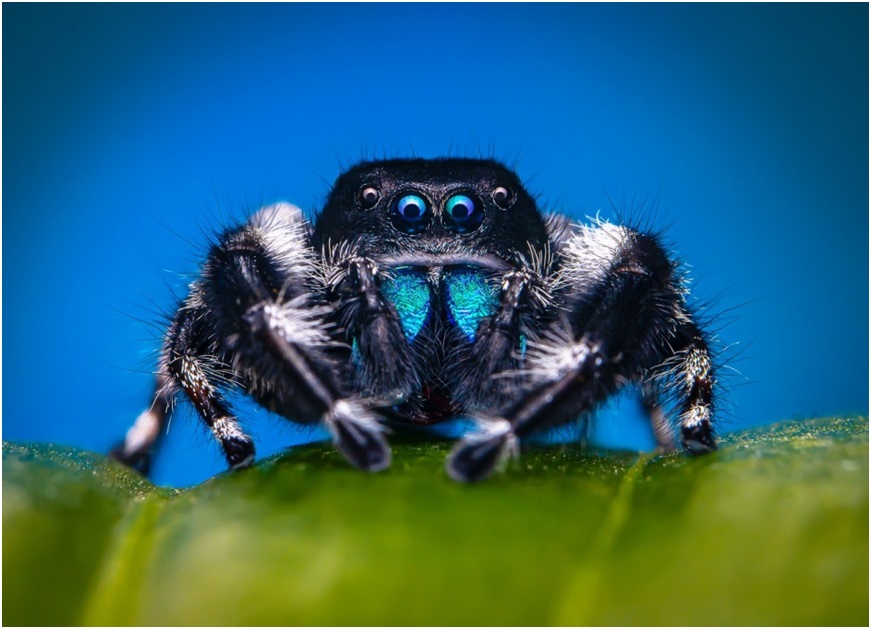
Jumping Spider: 1/200 Sec, f/18, ISO 400. Photo: Stewart Wood
